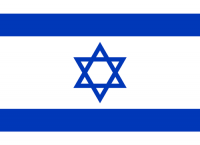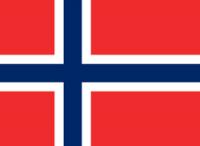-
Funding
Funding
HFSP supports novel, innovative and interdisciplinary basic research focused on the complex mechanisms of living organisms. A clear emphasis is placed on novel collaborations that bring biologists together to focus on problems at the frontier of the life sciences.
-
Awardees
Awardees
In this section you find information about the awardees in the HFSP scientific programs. This includes a searchable database of HFSP awardees, information on the HFSP Nakasone Award and other achievements by HFSP awardees.
- News & Impact
-
Events
Events
HFSP promotes and participates in several events every year. We are committed to bringing together the scientific community and forging new opportunities to network and have scientific discussions that help to create bridges and partnerships for the future of frontier science.
-
About
About
The Human Frontier Science Program is a program of funding for frontier research in the life sciences. It is implemented by the International Human Frontier Science Program Organization (HFSPO) with its office in Strasbourg. Here you can find all you need to know about the HFSPO.
Transcriptional program of Golgi biogenesis
2021
-
Grant Awardees - Program
Transcriptional program of Golgi biogenesis
POLISHCHUK Roman (RUSSIA)
Cell Biology and Disease Mechanism Program - Telethon Institute of Genetics and Medicine (TIGEM) - Pozzuoli - ITALY
KHODJAKOV Alexey (USA)
Lab. of Cellular and Molecular Basis of Diseases - Wadsworth Center - Albany - USA
DE BOER Jan (NETHERLANDS)
Dept. of Biomedical Engineering - Eindhoven University of Technology - Eindhoven - NETHERLANDS
The main objective of our proposal is to reveal the transcriptional program that governs Golgi biogenesis. Synthesis of new Golgi components is required in a large cohort of physiological processes ranging from cell growth to tissue biogenesis. However, how transcription contributes to Golgi biogenesis has yet to be sufficiently understood. Although several mechanisms regulating expression of Golgi genes have been described, their specificity for Golgi biogenesis remains controversial because they emerged from studying pleotropic responses to drugs, toxins, and ER stress that occur in the presence of resident Golgi (or at least its main constituents).
HERE WE PROPOSE TO ANALYZE HOW THE CELL REGULATES TRANSCRIPTION TO BUILD THE GOLGI FROM SCRATCH AFTER PHYSICAL REMOVAL OF THIS ORGANELLE. To achieve this challenging objective, the Golgi-containing portion of the cytoplasm will be severed by a laser from the rest of the cell, shaped by microfabricated patterns to be amenable for such Golgi nanosurgery. This procedure triggers a massive de novo assembly of the Golgi in the remaining part of the cell (karyoplast) that contains the nucleus. Golgi biogenesis in the karyoplast occurs in the absence of a preexisting Golgi organelle enabling a straightforward analysis of the transcriptional mechanisms required to build a new Golgi. This analysis will be done by collecting karyoplasts at different stages of Golgi recovery for single cell RNA-seq. A key to the success of our strategy is the international team of investigators with interdisciplinary expertise in laser nanosurgery, transcriptomics, microfabrication and high content screening of bioengineered materials.
Analysis of the transcriptome during the de novo assembly of the Golgi will unveil (i) how transcription of various genes correlates with various stages of Golgi regeneration, (ii) which signaling mechanisms are involved in this process, and (iii) which transcription factors drive Golgi biogenesis. We will establish how this transcriptional program operates in processes that require active Golgi biogenesis, specifically cell growth during preparation for division, accelerated secretion, and cell differentiation. Finally, using microfabricated scaffolds and growth patterns we will explore how this Golgi-specific transcriptional program could be controlled to promote engineering of bone and muscle tissue.


































